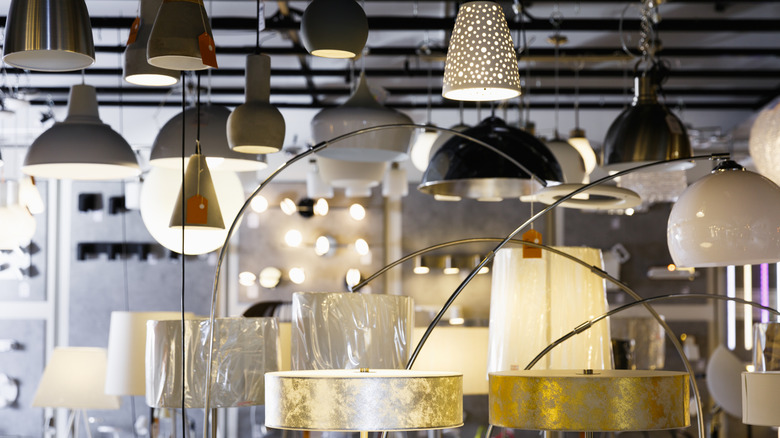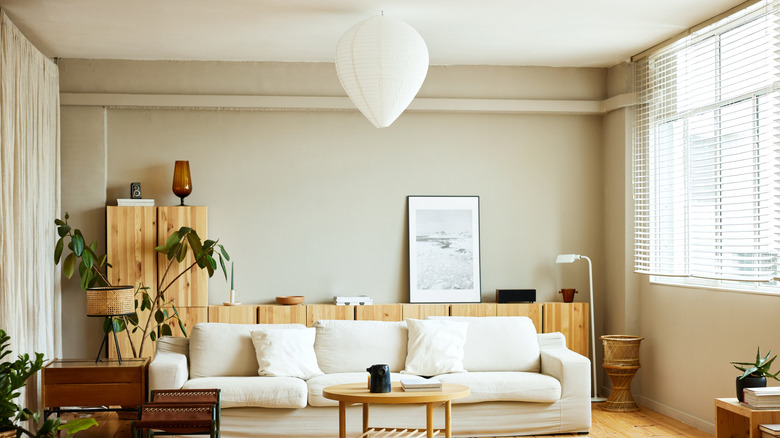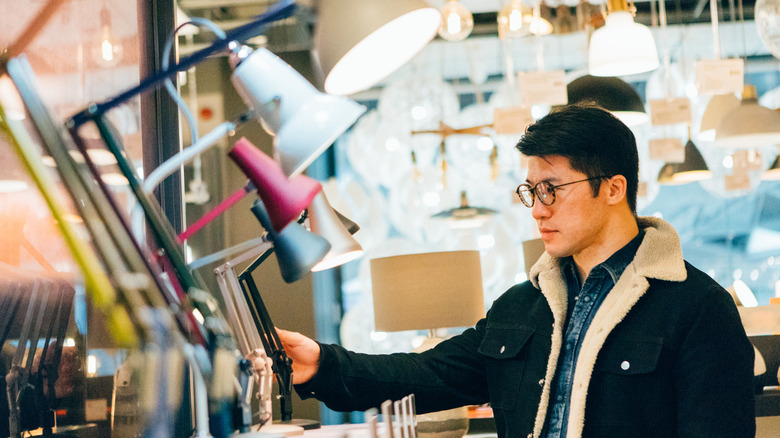3 Types Of Lights You Should Have In Every Room, According To Our Interior Designer
Lighting is a key part of any room. Not only does it help the space feel more welcoming to guests, but it also adds to the overall decor in the room. A beautiful chandelier or a unique desk lamp can add a bit of personality a space. However, it can be challenging to choose the perfect lighting for your space. To learn more about lighting and the three types of lights you should have in every room, House Digest spoke exclusively with Erika Dale, Interior Designer/Founder of Erika Dale Interior Design.
According to Dale, there should be three types of lighting in most rooms. "I absolutely agree that there need to be three sources of lighting, ambient, task, and accent, in every room to create a balanced lighting scheme," Dale said. "These layers of light all serve a distinct purpose and are used in different scenarios in the space. Together they create a lighting design that caters to various uses and moods."
Types of lighting 101
Light has many different types of terminology associated with it, and at first, it may feel overwhelming. Once you get the hang of this vocabulary though, it can help you when decorating your home. When Dale spoke exclusively with House Digest, she provided an explanation to help homeowners better understand the three different types of lighting.
When it comes to types of lighting, there are three main terms: ambient, task, and accent. "Ambient lighting is the overall glow that illuminates a room, which includes recessed cans and overhead light fixtures that set the backdrop of light," Dale explained. "Next, task lighting is more targeted bright light used for specific purposes, like pendants over an island, sconce over a sink, bathroom vanity lighting, a floor lamp next to a reading chair, a table lamp on a desk, and more." While task lighting helps us focus on specific tasks in a room, Dale added that it shouldn't be the only type of lighting in any given space. The third type of lighting is accent. Dale elaborated, "Finally, accent lighting is like the jewelry in the space, creating a little sparkle for aesthetic purposes and to highlight specific features or objects in a space, such as art lights over a painting, sconces surrounding a fireplace mantle, under-shelf lighting, and the cute mini table lamp on the kitchen counter."
While adding these different types of lighting may seem overwhelming at first, they help to make a space more cohesive. And, your lighting choices certainly don't have to be plain and simple. Check out these creative lighting ideas for indoors for some inspiration!
What lighting types should you focus on adding?
If adding all three types of lighting at once seems impossible from the get-go, do not fear. When House Digest spoke exclusively with Dale, she explained that all three light types are not essential for all rooms. In fact, in a very small room, all three light types may become a little overwhelming.
"While ambient and task lighting are essential to every space, accent lighting could be sacrificed for budgetary or space reasons," Dale shared. "However, it tends to be the accent lighting that draws the eye and highlights the architectural elements, artwork, objects, and more in your space to make it feel elevated and special, so be careful not to nix all of it. Small spaces like powder rooms or utilitarian areas like a walk in closet can also get away with no accent lighting." Ready to add more lights to your home? Find inspiration in any space you enter, and look at a variety of different guides, like this article that shares the best type of lighting to use in your kitchen.


